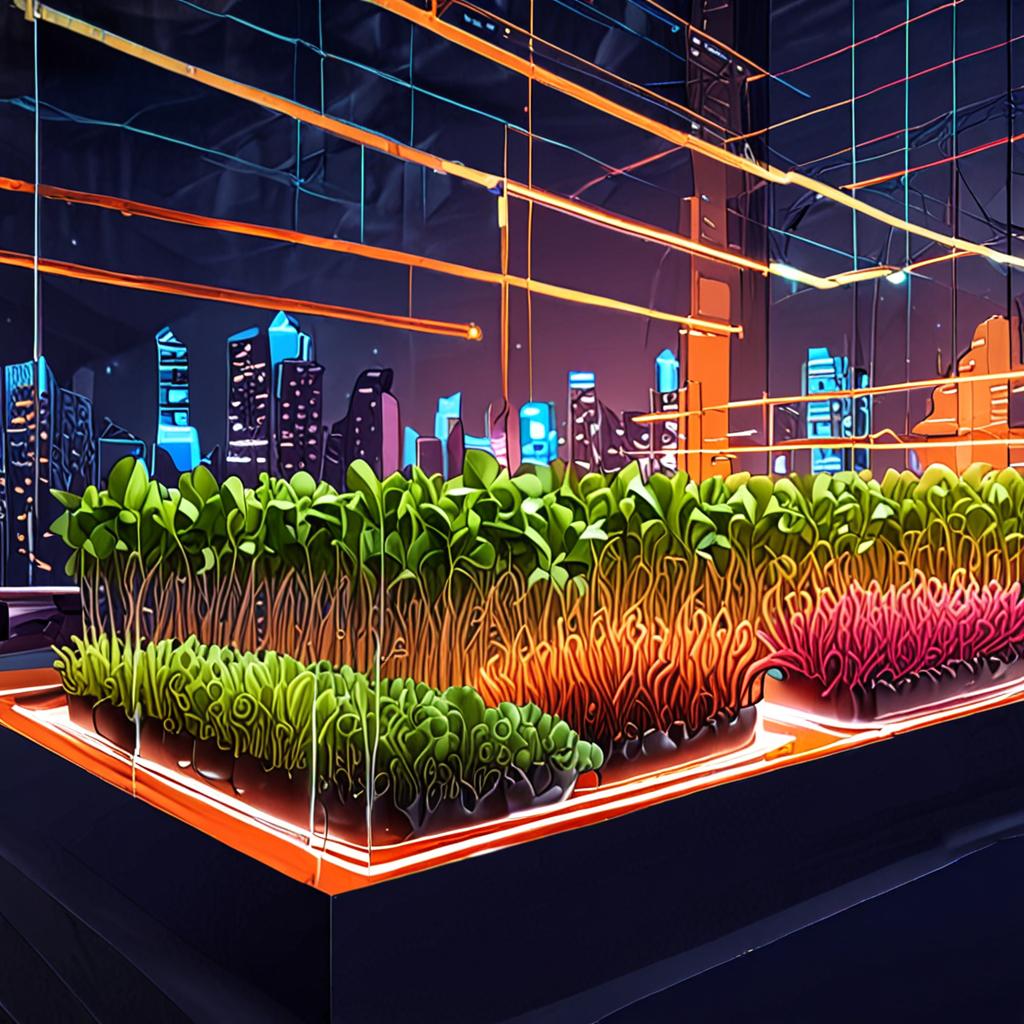Introduction
The pursuit of optimal nutrition has led to a surge in the popularity of microgreens, young, nutrient-dense versions of leafy greens and other vegetables. However, despite their potential, many individuals struggle to incorporate microgreens into their diets effectively. A significant challenge lies in the lack of comprehensive understanding of the benefits of microgreens, with many relying on anecdotal evidence or incomplete information.
Traditional approaches to promoting microgreens often focus on their novelty or celebrity endorsements, rather than providing concrete, evidence-based insights into their nutritional value and health benefits. For instance, a study published in the Journal of Agricultural and Food Chemistry found that many commercial microgreens products lack standardization in terms of nutritional content, making it difficult for consumers to make informed choices.
Recent advances in data analysis and AI-powered research have enabled a more nuanced understanding of microgreens’ benefits. By applying machine learning techniques to existing research and nutritional data, we can uncover the most significant advantages of incorporating microgreens into one’s diet. In this article, we will delve into the top 10 life-changing benefits of microgreens, backed by scientific evidence and real-world examples, to provide a comprehensive guide for professionals and enthusiasts alike.
Unlocking the Nutritional Potential: Microgreens as a Superfood Powerhouse
Microgreens are young, nutrient-dense versions of leafy greens and other vegetables, harvested within 1-3 weeks of germination. As a superfood powerhouse, microgreens offer an unparalleled nutritional profile, boasting up to 40 times more vitamins and minerals than their mature counterparts. This is due to their unique growth stage, where the plant’s energy is focused on developing its root system, resulting in a concentrated burst of nutrients.
A study by the USDA found that red cabbage microgreens contain 6 times more vitamin C and 69 times more vitamin K than their mature counterparts. This enhanced nutritional profile makes microgreens an attractive addition to a healthy diet, particularly for individuals seeking to boost their vitamin and mineral intake.
The application of AI in microgreens cultivation can further amplify their nutritional potential. By analyzing data on temperature, humidity, and light exposure, AI-powered systems can optimize growing conditions to enhance nutrient uptake and density. For instance, AI-driven hydroponics can increase microgreen yields by up to 30% while reducing water consumption by 90%. By leveraging AI in microgreens production, farmers and consumers can unlock the full nutritional potential of these superfoods, leading to improved health outcomes
Microgreens in Modern Wellness: Trends and Applications in Healthy Eating
Microgreens, young and nutrient-dense versions of leafy greens and other vegetables, have become a staple in modern wellness and healthy eating trends. These tiny greens pack a punch, offering up to 40 times more nutrients than their mature counterparts. As consumers increasingly seek out superfoods and functional ingredients, microgreens have found their way into upscale restaurants, health food stores, and home kitchens.
A notable example of microgreens’ growing popularity is their inclusion in high-end meal kit services. For instance, meal kit delivery company, Blue Apron, reported a 25% increase in demand for microgreen-infused recipes in 2020. This trend is driven by consumers’ desire for healthy, sustainable, and Instagram-worthy food options.
Artificial intelligence (AI) plays a crucial role in the microgreens industry, enabling farmers to optimize crop yields, predict flavor profiles, and streamline harvesting processes. AI-powered hydroponics and aeroponics systems also allow for precise control over growing conditions, resulting in more consistent and nutritious microgreens. By leveraging AI, microgreens producers can meet the growing demand for these nutrient-dense superfoods while reducing waste and environmental impact.
Bridging the Gap: How Microgreens Can Address Common Dietary Deficiencies
Microgreens, young and nutrient-dense versions of leafy greens and other vegetables, have been gaining popularity in the superfood and healthy eating communities. One of the key benefits of incorporating microgreens into one’s diet is their potential to address common dietary deficiencies.
In the United States, for example, it is estimated that over 90% of adults do not meet the daily recommended intake of essential vitamins and minerals, such as vitamin D, calcium, and iron (National Institutes of Health, 2020). Microgreens, with their high concentration of bioavailable nutrients, can help bridge this gap.
Artificial intelligence (AI) can play a crucial role in optimizing microgreen production and nutrition. For instance, AI-powered hydroponics and vertical farming systems can monitor and control temperature, humidity, and light levels to enhance nutrient uptake and density in microgreens. This technology can also help identify the most nutrient-dense microgreen varieties and optimize harvesting times for maximum nutritional benefit. By leveraging AI-driven insights, microgreen producers can create tailored products that address specific dietary deficiencies, making these superfoods an even more effective solution for promoting overall health and wellness.
Conclusion
The integration of artificial intelligence (AI) in the realms of microgreens, superfoods, healthy eating, wellness trends, and nutrition has revolutionized the way we understand and interact with these spaces. AI-driven research and analysis have enabled the discovery of new nutritional benefits, optimized cultivation methods, and personalized dietary recommendations, thereby elevating the field to unprecedented heights.
As we conclude our exploration of the life-changing benefits of incorporating microgreens into your diet, we encourage you to take concrete actions to harness their potential. Experiment with incorporating microgreens into your meal planning, exploring various recipes and flavor combinations to find what works best for you. Additionally, adopt a data-driven approach to nutrition, leveraging AI-powered tools and resources to monitor your nutrient intake, track your progress, and make informed decisions about your dietary choices. By embracing these strategies, you can unlock the full potential of microgreens and embark on a journey towards enhanced well-being and optimal health.
